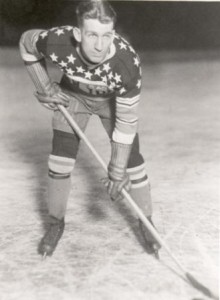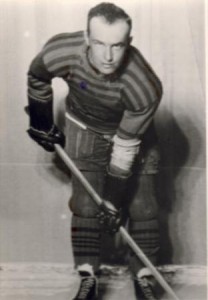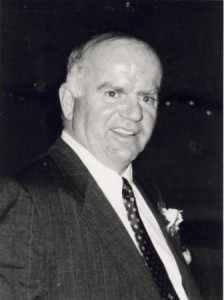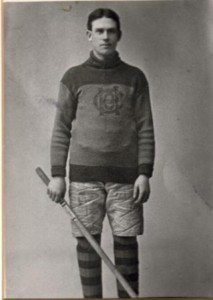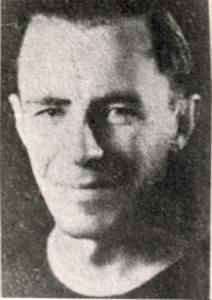 Mike Brophy was one of the slickest stick handlers ever to come out of theEast End mill pond.
Mike Brophy was one of the slickest stick handlers ever to come out of theEast End mill pond.
His hockey career lasted fifteen years, ten of them in the professional ranks. His athletic ability was not confined to hockey for Mike was a hard hitting football halfback, a softball pitcher and infielder of not and a much better than average golfer.
The size of his hands, like two Maple Leaf hams, always fascinated me. He could take a football from the centre, wrap his fist around the leather and sail through the line with both arms flailing. Mike played his first organized hockey with the Collingwood juniors in 1924.
In 1925, he was a member of an outstanding Collingwood junior club that unfortunately ran into the Owen Sound Greys in the first round. The Greys, with Cooney Weiland, Butch Keeling, Ted Graham and Dutch Cain, went on to win the
Memorial Cup.
Mike went to Owen Sound in 1926 and that club ended up in the O.H.A. Junior finals against Aura Lee. He turned professional with the Chicago Cardinals in 1927 and the next year found him in Hamilton in the old Can-Pro League under the coaching of Hap Holmes. The following year, Holmes moved the whole team to Cleveland in the International Leagues and Mike’s traveling days were over.
He became a hockey landmark in Cleveland and stared with that team for eight years until the end of his active career. During that time he helped Cleveland win the Calder Cup and three times led the league in scoring and made the All-Star team four times.
At one time he played with three other Collingwood born players on the Cleveland team-Reg Noble, Artie Clark and his brother, Bern.
Mike should have had a crack at the N.H.L in 1930 a deal was all set for a trade with Montreal Canadians but Holmes balked and kept him in Cleveland.
Mike never got the chance again. He organized, managed and played for the Pros in the first Collingwood Senior Softball League.

